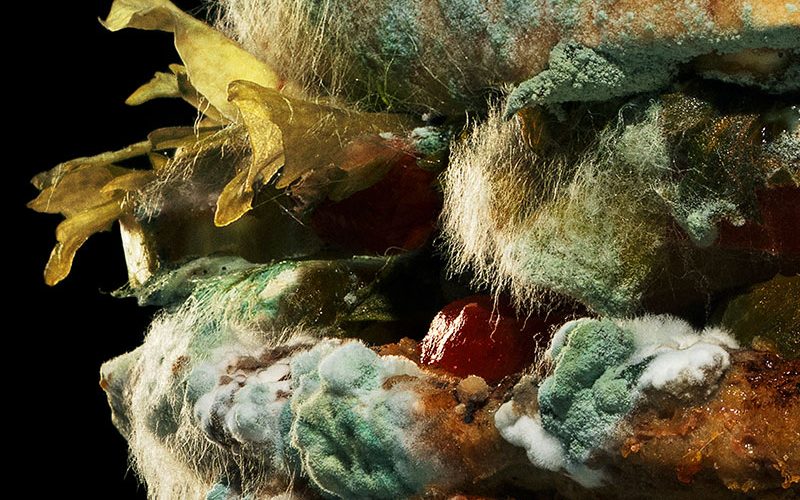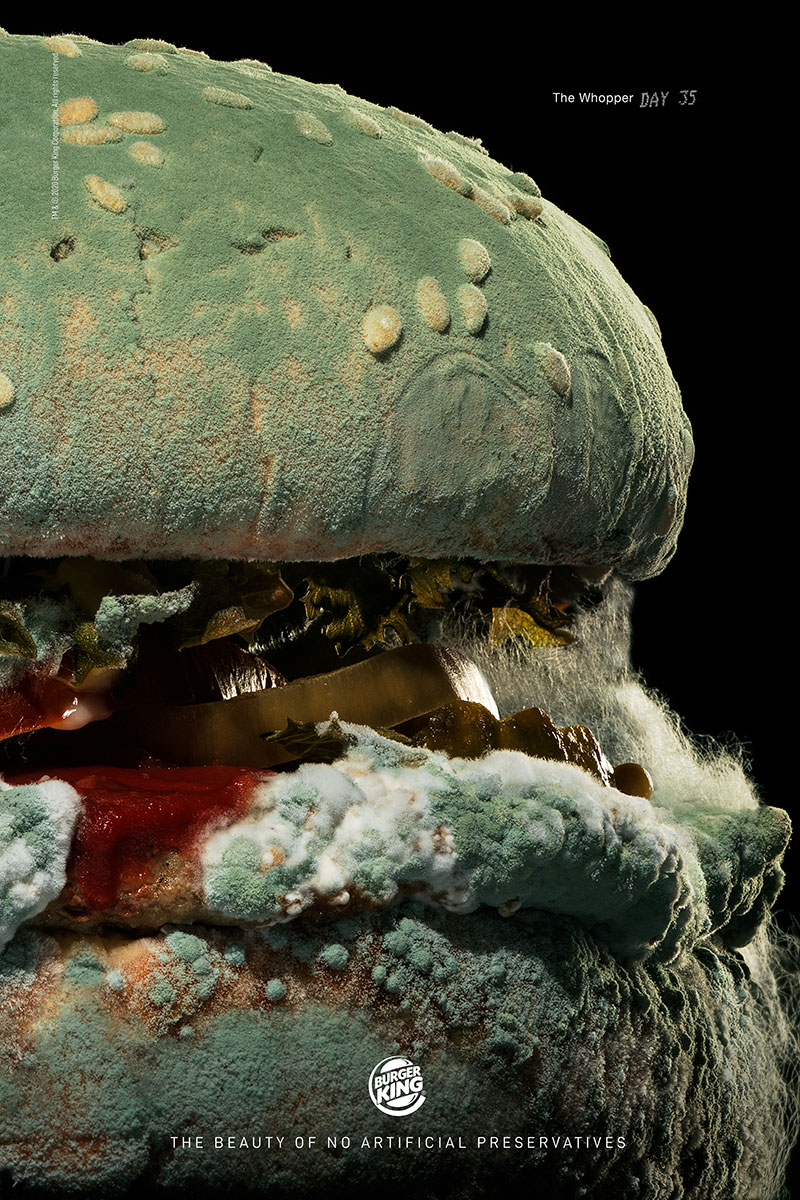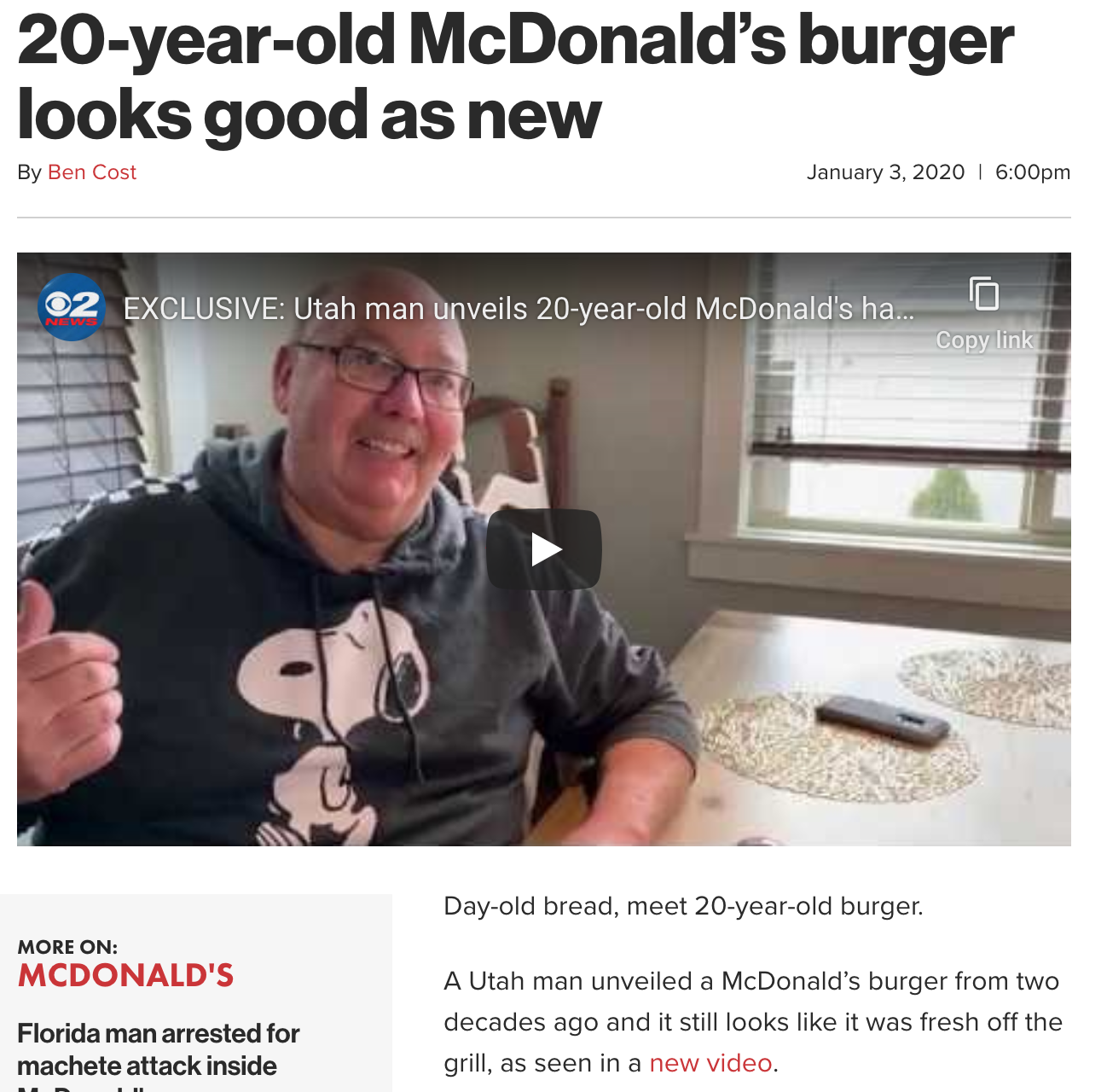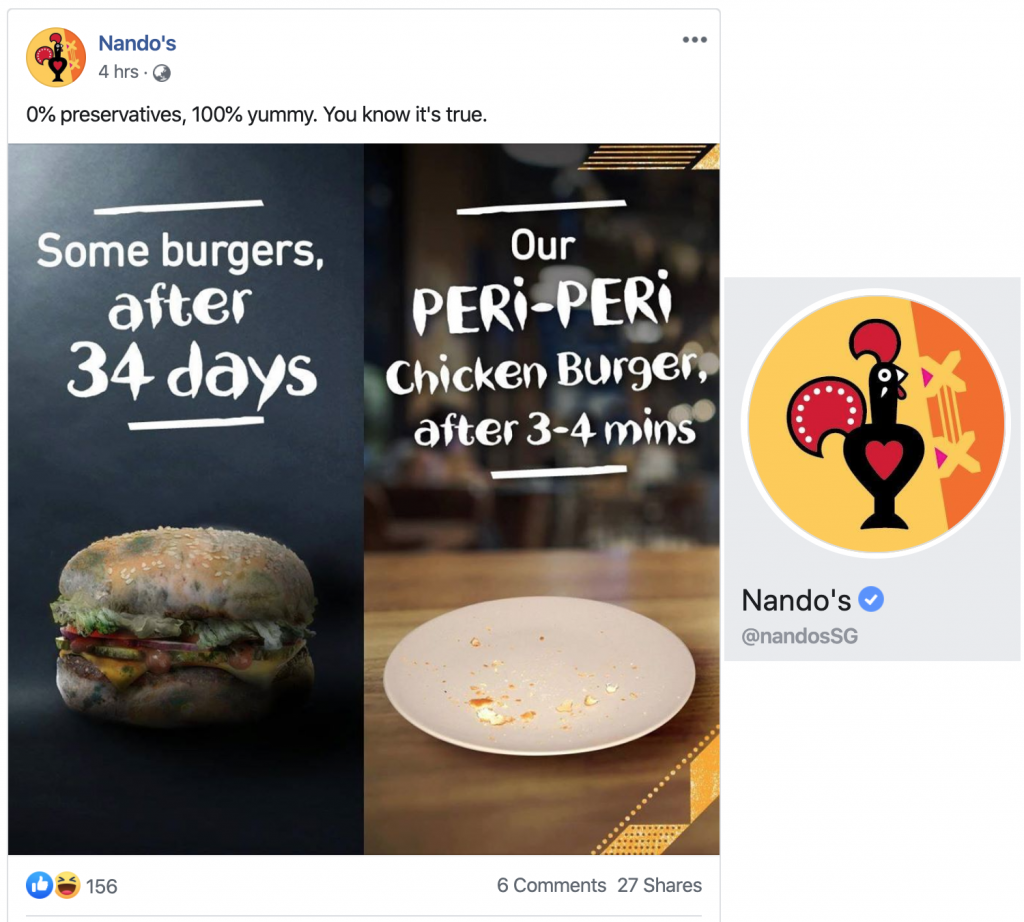
UPDATE: This idea by Burger King has been summarily obliterated by another brand 🙂 See the end of this post for the update.
There are brands, reasons and situations where showcasing something not-so-pleasant, disgusting or nauseating in advertising may be useful to make a sale.
If you use this, this is what will happen to you.
For example, most anti-smoking public service advertisements show something utterly disgusting like rotten lungs (due to prolonged exposure to smoking) to deter people from not continuing to smoke. Campaigns against pan masala and gutkha do the same. In fact, such nauseating photos are part of the product packing too, mandated by assorted Governments, in the hope that they deter people from indulging in those products.
If you don’t use our product, this may happen to you.
Take the example of Savlon. To compete with Dettol, Savlon showed that people who used their product on their wounds do not grimace in pain as it happens with Dettol. But, most people take that pain to be a demonstration of Dettol’s efficacy! Savlon could show people in pain (for Dettol), and then show users using Savlon, not in pain, during the same scenario. Mostly, they stick with the latter alone.
Use our product to not let that happen to you.
Baby shampoo brands could show a baby crying during the bath because the shampoo went into its eyes. Or, they could show a baby happily having a head bath and not seen to be crying at all. The brand could add the message on top: “See, no more tears!”.
If you don’t buy our product, you will suffer.
This is the pitch by most insurance brands that somehow have the license to showcase the terribly upsetting. Life Insurance Corporation’s good old ad shows a wife, after her husband’s death, with ‘Zindagi ke saath bhi. Zindagi ke baad bhi’ explaining the context of LIC’s benefit.
One industry that doesn’t ever (even) dream of showcasing anything disgusting or nauseating for a very, very, very good reason is the food industry. There are many, many videos out on the internet about how advertising agencies dress-up food photography to make it as appetizing as possible, often at the cost of not having any food products at all to ‘create’ that food (because the harsh lights during the photography melts/spoils the natural food ingredients)!
Burger King breaks that unspoken, Captain-obvious code with its latest stunt, ‘Moldy Whopper’.
Burger King shows how utterly disgusting and nauseating its own Whopper burger will look like, after many days, since it would have accumulated enough fungus by then.
Why? Because Burger King wants to celebrate the self-described “milestone” decision to remove all artificial colors, flavors, and preservatives from the Whoppers!
The campaign is credited to not one, but 3 agencies – David, INGO (Sweden) and Publicis!! Why 3? Read all about it here: . (Adweek)
Burger King showcases it rotting Whopper in high-resolution, excruciating detail. Up and close!




Burger King wants us to watch those utterly disgusting burgers and remember that after 28, 32, 33 and 35 days, those yummy burgers would look like this. And so, we should remember that these burgers are all-natural and good to eat.
Hold on!
First question. Why 28, 32, 33 and 35 days? Who exactly wants to consume a burger after that many days? I’m reasonably sure the answer is ‘nobody’.
So, why exaggerate the expiry of a burger?
One popular reason suggested is that this is an indirect attack on a famous McDonald’s story.
Early in January this year, !
This!

It seems the 20-year-old burger looked fresh off the grill!
Burger King has a . Looking at many of them together, it almost looks like Burger King sees itself only relative to McDonald’s and not as a brand of its own!
Considering the timing of the 20-year-old burger news, and this Moldy Burger campaign launch, and looking at Burger King’s past targeting of McDonald’s, it is highly plausible that this is yet another stunt to target its arch-rival (pun mildly intended; to refer to McD’s Golden Arches). This, notwithstanding the lengthy background story Burger King’s CMO offers in the Adweek story about how this idea was pitched to them by 3 agencies across many years.
For context, McDonald’s announced that it is removing artificial preservatives from its products in 2018! And addressed the myth about its burger not decomposing (given such stories existed even before the latest one in 2020) !
So, there we have it.
Burger King showcases its rotting burgers in the fervent hope that the 30-days-old context would make us appreciate that it is all-natural and we’d head to a nearby Burger King to buy a fresh burger. And erase the memory of that rotting burger from our minds while we are eating that juicy, fresh burger.
Easier said than done.
As I said, there is a very good reason why the food industry doesn’t put anything nasty in people’s minds while advertising.
Is Burger King’s stunt talk-worthy and memorable? Of course, it is.
It is as talk-worthy and memorable as a gruesome car crash that has mangled body parts strewn all over the place. We gawk at the scene with fascination, disgust and pity, at the same time. And… we drive off a bit more cautiously than usual.
It is as talk-worthy and memorable as a gravely ill patient in the hospital, owing to a viral contagion. We meet that person, give him flowers and then get out of the room to wash our hands. Rightly so.
Internet journalism made such topics popular. They produced endless streams of such stories of the disgusting and nauseating to keep us hooked to more stories. Not to sell the opposite of those stories, but to sell more of such stories.
Burger King wants us to visually consume the disgusting, mentally erase the picture and bite into their fresh burgers.
Seems like a tough ask to me.
This is very much a stunt to attract attention. And attract attention, it sure does, in a perverse way. But the point of a marketing stunt is at the service of selling a product. If it repels, the stunt is for the sake of a stunt. A ‘look, we can pull this off too!’. There is a reason why people don’t run around naked on the street. If someone does, that is no doubt brave and bold, but also begs the question, ‘Why?’.
UPDATE (February 22, 2020):
Nando’s Singapore has obliterated Burger King’s severely exaggerated ‘creative’ idea of using a 34-day old burger to make a point. The basic question I ask in my post – who leaves a burger uneaten for 34 days?’ is the crux of Nando’s incredibly simple and elegant counter-offensive. They have really thought through this, I can see – ’34’ days is split up into ‘3-4 minutes’ intentionally 🙂

This is what happens when a brand focuses all its attention on trolling a rival, and ends up being trolled by a smarter, smaller rival.
